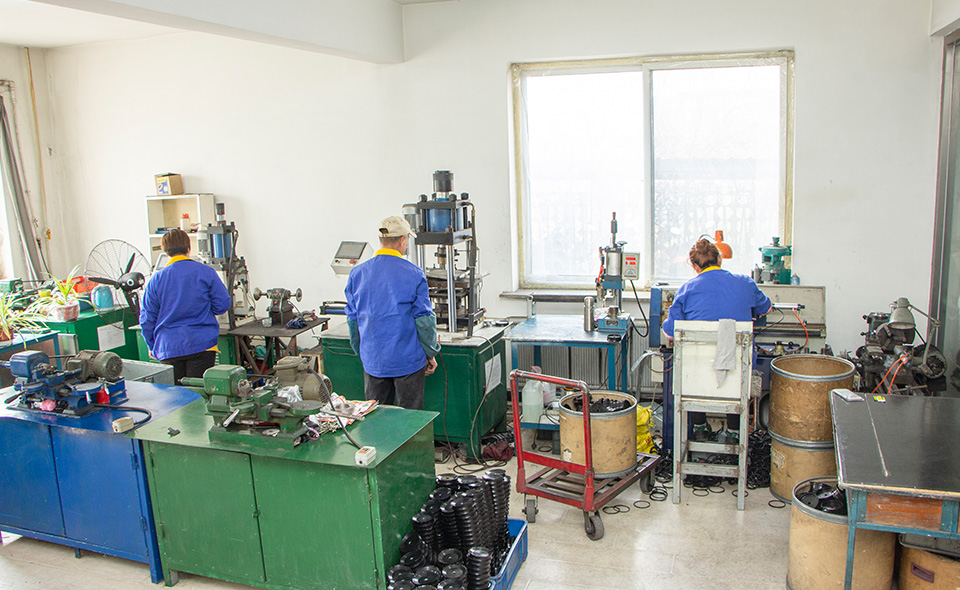Rubber seals are versatile components designed to prevent leakage, protect against contaminants, and maintain the integrity of various mechanical systems. Composed primarily of rubber or elastomeric materials, these seals come in a wide array of shapes, sizes, and compositions, tailored to suit specific applications across industries.
At their core, rubber seals act as guardians against the intrusion of liquids, gases, dust, and other foreign particles. Their pliable yet robust nature allows them to conform to irregular surfaces, creating a secure barrier that prevents fluid or gas escape and inhibits external elements from entering sensitive areas. This adaptability enables their use in diverse settings, from automotive engines and industrial machinery to household appliances and hydraulic systems.
The manufacturing process of rubber seals involves precision and expertise. Advanced techniques mold or extrude raw rubber materials into desired shapes, ensuring accuracy and consistency. These seals may feature intricate designs, such as grooves or channels, enhancing their sealing capabilities by providing a more secure fit within mechanisms or between components.
One of the key attributes of rubber seals is their resilience in adverse conditions. They exhibit excellent resistance to temperature extremes, chemicals, oils, and UV radiation, enabling them to endure harsh environments without deteriorating. This durability ensures prolonged functionality and reliability, critical factors in industries where performance is paramount.
In the automotive sector, rubber seals play a pivotal role in maintaining vehicle efficiency and safety. They seal critical joints in engines, transmissions, and braking systems, preventing leaks and ensuring optimal performance. Additionally, door and window seals contribute to noise reduction and insulation, enhancing the overall comfort and driving experience.
Within industrial machinery, rubber seals serve in hydraulic and pneumatic systems, where they contain pressurized fluids and gases, preventing leaks that could compromise machinery operation or pose safety risks. Their ability to withstand intense pressure and varying temperatures makes them indispensable in heavy-duty applications.
In the realm of household appliances, rubber seals find their place in refrigerators, dishwashers, and washing machines. Sealing doors and compartments, they maintain proper insulation, prevent leaks, and contribute to the appliances' energy efficiency by preserving temperature and reducing moisture infiltration.
Moreover, in aerospace and marine industries, where reliability is non-negotiable, rubber seals ensure the integrity of critical components. They withstand extreme conditions, including rapid pressure changes, temperature variations, and exposure to saltwater, safeguarding against potential failures in aircraft, spacecraft, or marine vessels.
The evolution of rubber seal technology continues to introduce innovations and advancements. Enhanced materials and manufacturing techniques contribute to improved performance, longevity, and environmental sustainability. For instance, the development of eco-friendly elastomers reduces the environmental impact without compromising the seals' efficiency.
Proper installation and maintenance are crucial to maximizing the effectiveness of rubber seals. Regular inspections, lubrication when necessary, and replacement of worn-out seals ensure continuous protection and functionality, reducing the risk of system failures and costly repairs.
Rubber seals stand as indispensable components across multiple industries, serving as guardians against leaks, contaminants, and environmental factors. Their adaptability, durability, and reliability make them integral in ensuring the seamless operation of machinery, vehicles, appliances, and critical systems, highlighting their essential role in modern engineering and manufacturing.
Modern engineering has seen the integration of smart sensors and monitoring systems within rubber seals. These innovations allow for real-time data collection on factors like temperature, pressure, and wear, enabling predictive maintenance strategies. By detecting early signs of wear or potential failures, these smart seals contribute to increased reliability and cost savings by preventing unexpected downtimes or catastrophic breakdowns.
Furthermore, ongoing research and development efforts focus on enhancing the sealing efficiency of rubber components. Engineers are exploring novel materials and refining designs to achieve tighter, more secure seals that can withstand even more extreme conditions. Nano-engineered rubber compounds, for instance, offer increased durability and resistance to wear, promising longer service life and improved performance in critical applications.








